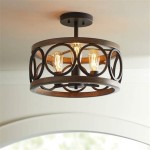Theater Room Ceiling Lighting: Essential Aspects for a Captivating Cinematic Experience
Creating an immersive theater room experience goes beyond selecting the right screen and sound system; proper lighting plays a crucial role in enhancing the overall ambiance and providing an unparalleled cinematic journey. When it comes to theater room ceiling lighting, there are specific aspects to consider for optimal viewing conditions and comfort.
Purpose and Function
The primary purpose of theater room ceiling lighting is to provide ambient illumination, creating a cozy and inviting atmosphere while minimizing eye strain during prolonged viewing sessions. The right lighting levels enhance the visibility of the screen, ensuring that colors and details are accurately represented.
Light Sources and Color Temperature
The choice of light source significantly impacts the ambiance and viewing experience. Opt for LED fixtures that emit a warm or neutral white light with a color temperature around 2700K to 4000K. This range provides ample illumination without introducing excessive glare or blue light that can disrupt sleep patterns.
Brightness and Dimmability
The brightness of the ceiling lights should be adjustable to accommodate different viewing conditions. Look for fixtures with dimmable capabilities that allow you to lower the light intensity during movie screenings and increase it for other activities like cleaning or socializing. This versatility enhances the overall functionality of the theater room.
Light Distribution
The distribution of light is crucial for avoiding distracting hot spots or dark areas on the screen. Consider using fixtures that provide even and diffused illumination across the ceiling surface. This ensures that the light is evenly distributed, reducing eye fatigue and enhancing the viewing experience.
Positioning and Placement
Proper positioning of the ceiling lights is essential for optimal light distribution and glare reduction. Mount the fixtures at a height that ensures the light falls evenly across the screen without directly illuminating the viewers. This minimizes eye strain and prevents the appearance of distracting reflections.
Control and Automation
To fully enhance the theater room experience, consider integrating the ceiling lighting with a control system. This allows you to adjust the light levels, color temperature, and scenes remotely using a smartphone or tablet. Automation capabilities enable you to create customized lighting presets for different activities, ensuring a seamless transition from movie screenings to casual entertainment.
Additional Considerations
In addition to the essential aspects discussed above, consider the following factors when choosing theater room ceiling lighting:
- Ceiling height: Higher ceilings require higher-wattage fixtures to provide adequate illumination.
- Room size: Larger rooms require more light sources to evenly distribute illumination.
- Decorative elements: Choose fixtures that complement the overall aesthetic of the theater room, enhancing its visual appeal.
- Energy efficiency: LED fixtures are highly energy-efficient, reducing operating costs and environmental impact.
By incorporating these essential aspects into your theater room ceiling lighting design, you can create an immersive and visually stunning environment that complements the cinematic experience and enhances every viewing session.

4 Secrets To The Best Home Theater Lighting

10 Home Theater Lighting Ideas To Spice Up Your Media Room Blisslights

Home Theatre Lighting Guide Tcp

Home Theater Lighting Guide From The Experts How Do You Design It Much Does Cost

Best Practices For Amazing Home Theater Lighting Audio Advice

A Complete Guide To Home Theater Lighting Setup Octane Seating

Home Theater Lighting Ideas Tips

How To Light Your Home Theater Rensen House Of Lights

Home Theatre Lighting Solutions Brilliant

4 Secrets To The Best Home Theater Lighting
Related Posts







